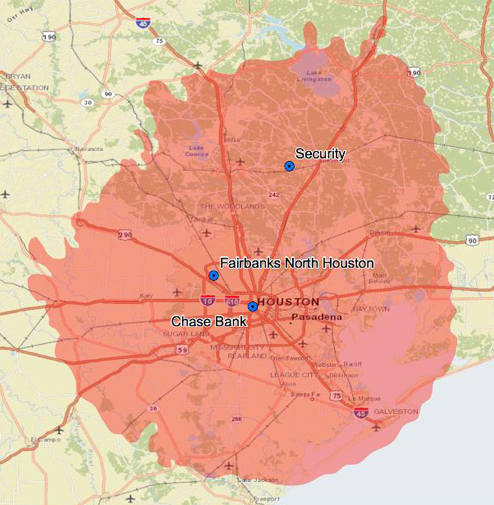YOU’RE COMPLETELY CONNECTED
With this dynamic evolution of MOTOTRBO digital two-way radios, you’re better connected, safer and more productive. The XPR 5000e Series is designed for the skilled professional who refuses to compromise. With high performance integrated voice and data, and advanced features for efficient operation, these next-generation radios deliver complete connectivity to your organization.
CONNECTED:
The MOTOTRBO XPR 5000e Series is a family of DMR-standard digital radios that delivers operations-critical voice and data communications. Bluetooth® audio lets you talk without wires, integrated Wi-Fi® enables remote software updates, and indoor and outdoor location-tracking capabilities give you total visibility of your resources. With support for trunking as well as legacy analog technology, you can keep your organization connected as it grows.
SAFE:
Safeguard your staff with responsive push-to-talk technology. The quick access buttons on XPR 5000e Series radios can summon help with one touch, using Transmit Interrupt to clear a channel when necessary. A range of safe driving accessories allow your workers to communicate hands-free, and Text-to-Speech technology helps your drivers keep their eyes on the road.
PRODUCTIVE:
Text messaging and Work Order Ticketing simplify complex communications, and data capabilities support advanced applications. Featuring a high power audio amplifier, these radios deliver loud, clear speech, with background noise cancellation for better intelligibility. XPR 5000e Series radios are also ideal as a dispatch solution, with desktop microphones and a rugged, durable design for everyday use.
WHAT’S NEW IN THESE NEXT GENERATION RADIOS?
Integrated Wi-Fi®
Over-the-air software updates
Bluetooth® 4.0
Indoor location tracking
CONNECTION:
VHF Band, 45 W
UHF Band, 40 W
800/900 Band, 30 W
45, 40, 30 W Transmit Power
Alphanumeric Model: ColorScreen, 1000 Channels
Numeric Model: Numeric Display, 32 Channels
Analog and Digital
Voice and Data
Integrated Wi-Fi
Canned Text Messaging
Freeform Text Messaging(Requires Keypad Mic)
Work Order Ticketing
Indoor Location-Tracking
Event-Driven Location Update
Bluetooth Audio and Data
Voice Announcement
Text to Speech
Option Board
Home Channel Reminder
AUDIO:
Intelligent Audio
IMPRES Audio
Acoustic Feedback Suppressor
Microphone Distortion Control
User-Selectable Audio Profiles
Trill Enhancement
PERSONALIZATION:
Wide Range of Accessories
4 Programmable Buttons
MANAGEMENT:
Radio Management
Over-the-Air Software Update
SAFETY:
Lone Worker
Basic Privacy
Enhanced Privacy
Transmit Interrupt
Digital Emergency
Emergency Search Tone
Remote Monitor
Radio Disable / Enable
Waterproof to IP54
Rugged to MIL-STD 810
SYSTEMS:
Dual Capacity Direct Mode
Conventional
IP Site Connect
Capacity Plus (Single andMulti-site)
Capacity Max
Connect Plus
MOTOTRBO ACCESSORIES
LONG RANGE WIRELESS MOBILE MICROPHONE:
Designed for customers who depend on their high power mobile radio but must work outside of their vehicle, the Long Range Wireless Mobile Microphone keeps you connected and communicating up to 330 ft (100 m) from your vehicle. With instant touch pairing and in-vehicle charging cradles, you can maintain critical communications even on remote job sites.
HANDHELD CONTROL HEAD:
When space is tight, and you need the flexibility to operate your radio from anywhere in the vehicle, opt for the Handheld Control Head. Its color screen, full keypad and extendable cord gives you complete control within 8 m (26 ft) of the radio.
BLUETOOTH AUDIO:
Improve the mobility of your work teams without wires getting tangled. Your delivery driver can sort through packages on the back of the delivery truck, your bus driver can check students in the back of the bus, and your limousine driver can open the door for their passengers and stay connected.
CONNECT AND COORDINATE EFFORTLESSLY:
IMPRES™ Smart Audio accessories communicate with the radio to suppress ambient noise, improve voice intelligibility and amplify loudness. Choose from a range of standard and heavy duty microphones, with or without keypads and navigation buttons.
INTERACT SAFELY WITHOUT DISTRACTIONS:
To help your drivers keep their eyes on the road, you can customize your installation with the IMPRES Visor Microphone and Remote Push-to-Talk .
Workers who must be mobile need a communication solution that makes it easy and affordable for them to stay in touch.
Mobile Radios
Two-way radio functionality with digital technology to deliver increased capacity, efficiency and enhanced communications.
Portable Radios
Accessories with unique features designed to optimize the performance of YOUR radio in your work environment!
Accessories


